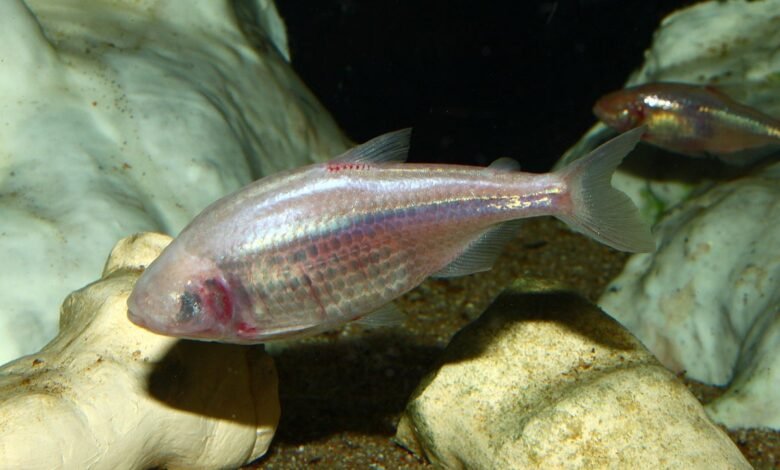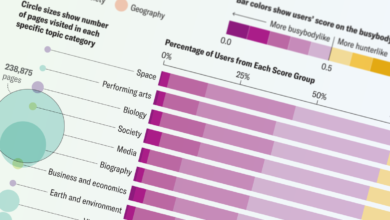What Blind Cave Fish and Venomous Snails Can Teach Us about Diabetes

What Blind Cave Fish and Venomous Snails Can Teach Us about Diabetes
Studies of insulin, blood sugar and diabetes in other animals such as fish and dogs have already saved millions of lives and could lead to new treatments for type 1 and type 2 diabetes.

This video is part of “Innovations In: Type 1 Diabetes,” an editorially independent special report that was produced with financial support from Vertex.
Tom Lum: Why do we care so much about studying diabetes in random animals? Sometimes it feels like scientists are just like …
On supporting science journalism
If you’re enjoying this article, consider supporting our award-winning journalism by subscribing. By purchasing a subscription you are helping to ensure the future of impactful stories about the discoveries and ideas shaping our world today.
[Lum spins around, pretending to play a game similar to pin the tail on the donkey]
Lum: Okay, okay, let’s see, and—boop!
[Lum lands on a note that says “blind cave fish”]
Lum: [Shrugs] Why not?
So is it really that important? Yes! [Pauses] Right, sorry—I should explain.
Humans have known about diabetes for a long, long time. There’s records from across the world for thousands of years.
But until the 1900s we really didn’t know what was happening, and oftentimes the disease was simply a death sentence.
We now know that diabetes happens when the sugar traveling in your bloodstream to give your body energy can’t seem to connect to the body’s receptors right to do that job. That’s because we need insulin to make that connection happen. And in the case of diabetes, the body is either not producing enough or not using it properly.
So what does any of this have to do with blind cave fish or snails?
Well, here’s the thing to remember: Turning sugar into energy is a really fundamental thing. It’s what the famed powerhouse of the cell does! And so getting that sugar to the cells that need it is just as fundamental.
So while you or I may have only ever heard the word insulin used as a medicine for people, the chemical insulin, or a similar insulin-like chemical, is found in nearly every single animal.
And so, many animals—including common household pets—can develop diabetes, too. In fact, the reason why scientists know to treat diabetes with insulin is from studies on diabetic dogs. They were able to isolate insulin from healthy dogs and inject it into diabetic dogs.
This research would go on to win the Nobel Prize and also firmly cement the title of “man’s best friend” for dogs.
And animals less similar to us have developed other strange ways of using insulin, too. The simple cone snail, for example, uses insulin in its venom to poison fish. And still researchers are studying that venom because we could learn something from it that could make better insulin treatments for people.
Even that blind cave fish, because it lives in a cave, has inconsistent food schedules and has huge blood sugar spikes. But it doesn’t seem to suffer any negative consequences, and so we may be able to learn something from that.
Studying diabetes in animals isn’t just something that could save lives. It already has and currently is saving countless lives. So who knows what these other animals could teach us?
[Lum speaks to an image of a cone snail]
Lum: Maybe one day you’ll be man’s best friend. I think you’re pretty cute.
[Lum touches the snail]
Lum: Ow! Ha, that’s…Hey, guys, is the snail venom only poisonous to fish or—
It’s Time to Stand Up for Science
If you enjoyed this article, I’d like to ask for your support. Scientific American has served as an advocate for science and industry for 180 years, and right now may be the most critical moment in that two-century history.
I’ve been a Scientific American subscriber since I was 12 years old, and it helped shape the way I look at the world. SciAm always educates and delights me, and inspires a sense of awe for our vast, beautiful universe. I hope it does that for you, too.
If you subscribe to Scientific American, you help ensure that our coverage is centered on meaningful research and discovery; that we have the resources to report on the decisions that threaten labs across the U.S.; and that we support both budding and working scientists at a time when the value of science itself too often goes unrecognized.
In return, you get essential news, captivating podcasts, brilliant infographics, can’t-miss newsletters, must-watch videos, challenging games, and the science world’s best writing and reporting. You can even gift someone a subscription.
There has never been a more important time for us to stand up and show why science matters. I hope you’ll support us in that mission.






